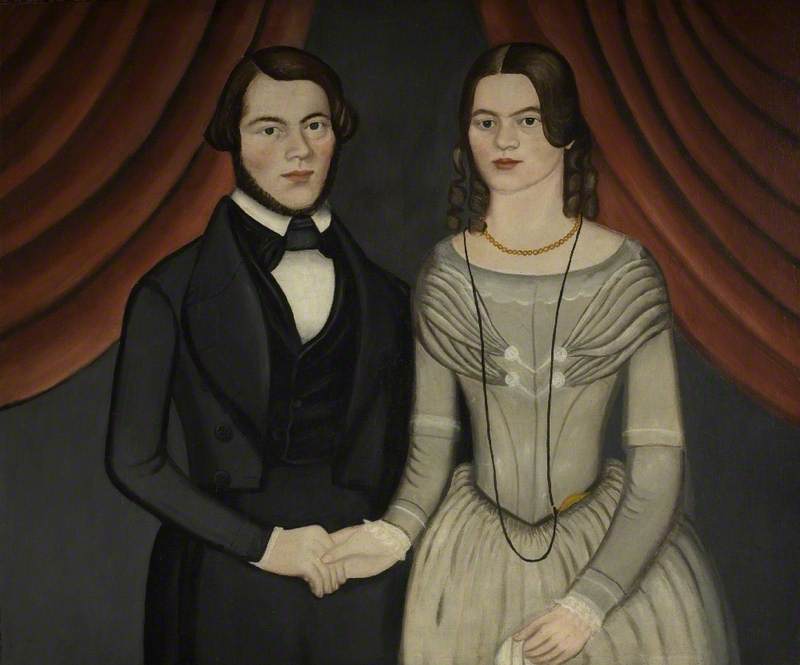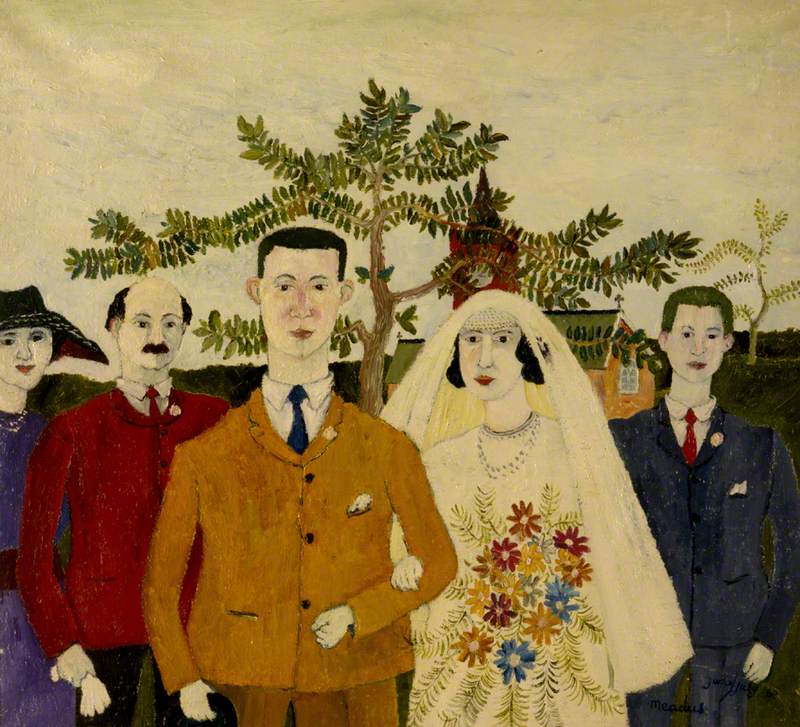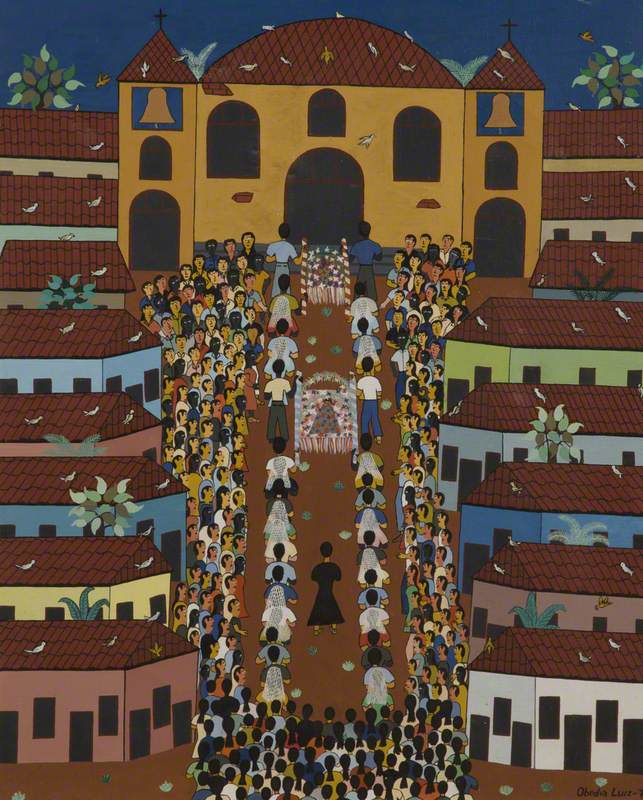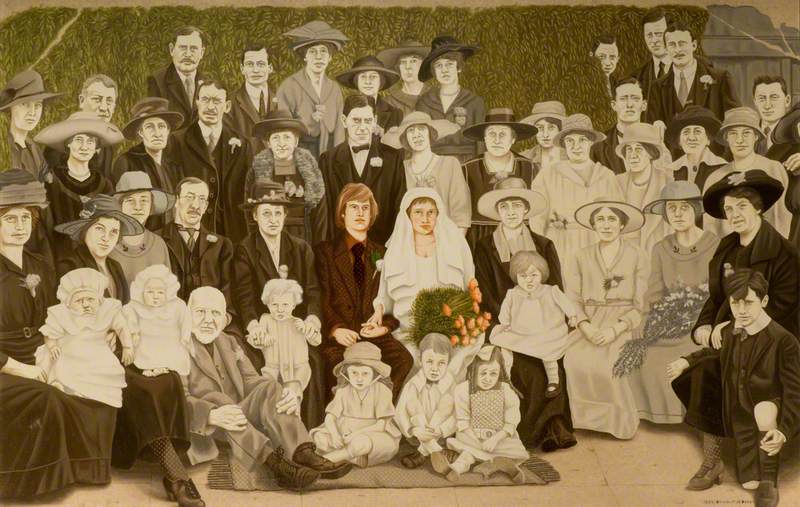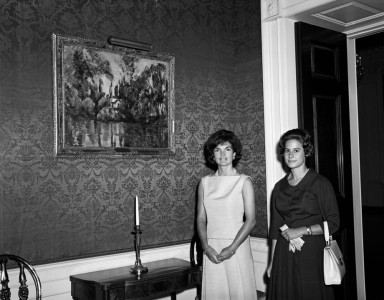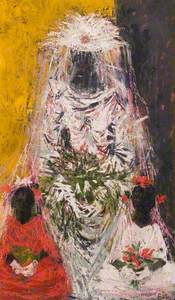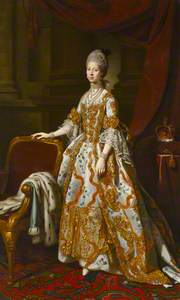Wedding season is in full swing. I attended my first ceremony of the year at the beginning of May and it was a glorious day, filled with happiness and love. The bride, a modern feminist, was not confined by old traditions. Her mother walked her down the church aisle, she will continue to use her maiden name for work and, to my singleton dismay, she did not throw a bouquet, believing the ritual can cause shame to women over the age of 25 who are still single. Kate Middleton also opted not to throw a bouquet in the air and instead placed her flowers on the grave of an unnamed First World War soldier.
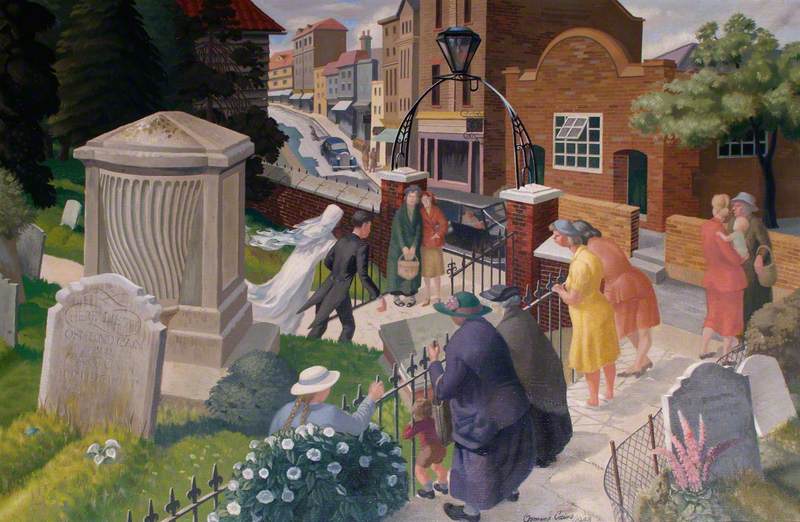
© the copyright holder. Image credit: Richmond upon Thames Borough Art Collection
Wedding at Twickenham Parish Church 1948
Osmund Caine (1914–2004)
Richmond upon Thames Borough Art CollectionKensington Palace revealed that Meghan Markle, who has been betrothed to Prince Harry since November 2017, will depart from tradition by not having a maid of
The idea of modernity and independence on a wedding day is reflected
For example, the wearing of a white, flowing gown has remained a consistent part of western weddings for the last half a century. Wearing white
Meghan Markle, who recently received her baptism and confirmation into the Church of England, is likely to wear white. The V&A describes the wedding dress as an outfit steeped in symbolism and even superstition. Her departing from this norm will likely cause religious and social tension.
It will be exciting to see how Meghan chooses to wear her hair. We are used to seeing her with straight, layered hair but it is unusual for a bride to wear her hair down. I favour an updo, as perfectly worn by Queen Charlotte Mecklenburg Strelitz, who some art critics and historians argue was the first mixed-race Queen of England. Philip Mould's observation of Charlotte is that she fitted the description of a fairytale princess because of her 'slight frame, pale skin and blue-green eyes'. It’s hard to deny that some of the portraits of the former Queen have a resemblance to the soon-to-be princess.

Image credit: National Trust Images
Queen Charlotte of Mecklenburg-Strelitz (1744–1818) 1768/1769
Nathaniel Dance-Holland (1735–1811)
National Trust, UpparkWhat of the sartorial style of her bae Prince Harry? Will he choose to wear a brown suit, similar to the one painted by self-taught artist Eric Meadus? Meadus grew up on a council estate in Southampton, and his work often compared with his acquaintance L. S. Lowry. Just as he was starting to achieve a recognition in the art world, he died at the age of 39. If he was still alive, he may have possibly snagged a golden ticket to the royal wedding. As well as the official dignitaries, Prince Harry and Meghan Markle have chosen to invite over 1,200 public guests to their special day.
The couple, who are shrouded in privacy yet highly visible, will also have their union televised to millions across the world. The crowds to assemble outside the Windsor Chapel will be similar to the
Regardless of how many people are in attendance, I have always maintained that newlyweds have a glazed look in their eyes: they are only able to see each other, even in the midst of their well-wishers. Cleverly, David Wedgbury seems to capture this energy in his 1978 oil painting The Wedding. A seated wedding party poses for a photo. Only the bride and groom are painted in full colour, signifying all eyes are on them. The guests are painted in grayscale, fortifying their presence but also their invisibility to onlookers and the bride and groom. Everything and everyone around Prince Harry and Meghan Markle will fade in their glow.
Bee Tajudeen, Founder of Black Blossoms and UAL graduate

